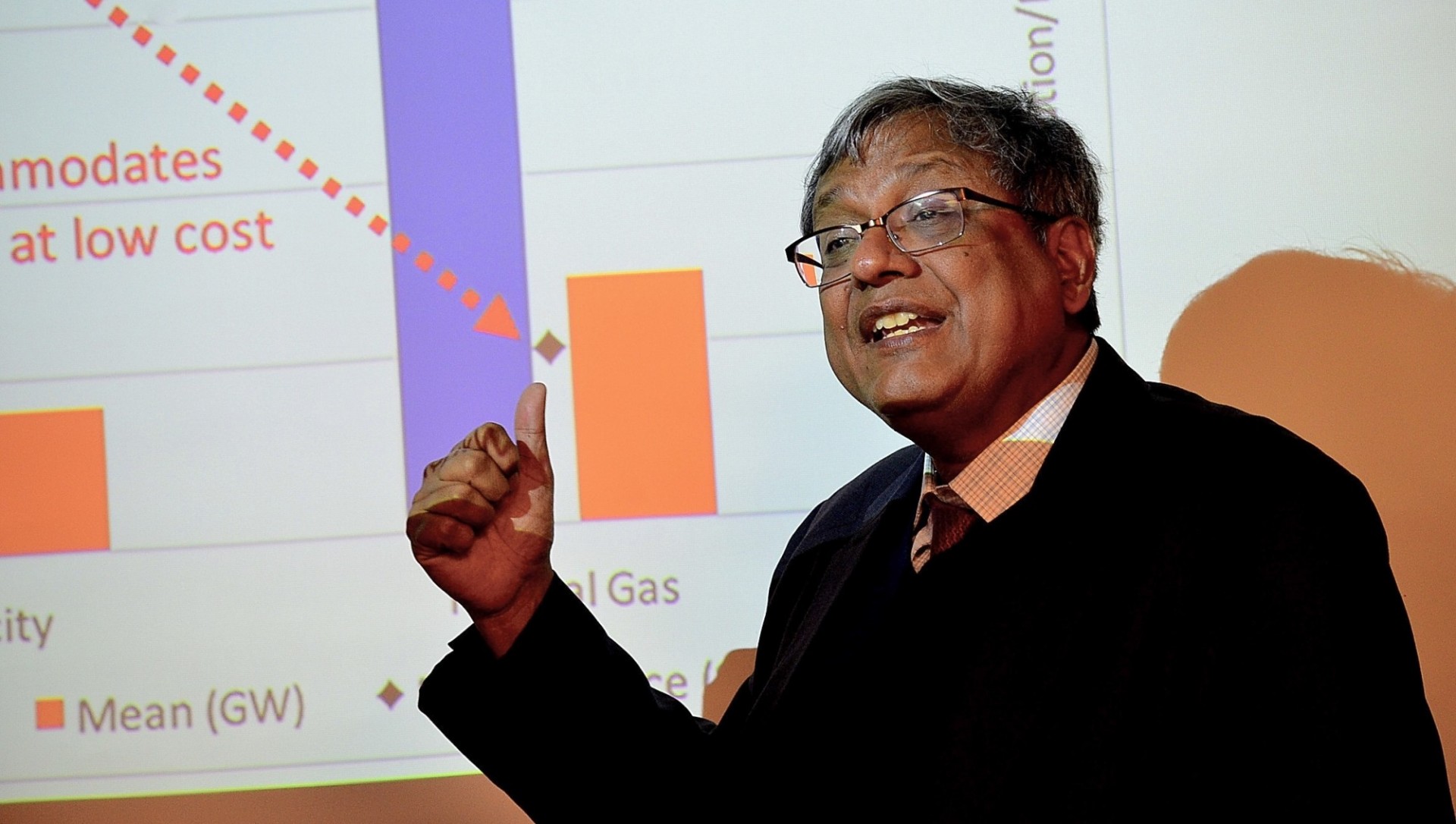Energy Planning with Low-priced Wind and Solar, from New York State to Chile

With a global expansion of wind and solar energy projects, there is an opportunity to provide power to more people at lower cost and less impact than ever before. For governments who seek this path, the challenge lies in planning a transition from carbon-intensive energy sources to these new energy sources and along the way harness the unique potential of industry and government to create incentives for this change.
These are the issues that Vijay Modi, Columbia University professor of mechanical engineering and a member of the Earth Institute faculty, discussed in a presentation in late July hosted by the Santiago Center. With a global vision and specific experience from New York State, Modi presented on the “Role of Energy Planning in a World with Low-priced Wind/Solar: Implications for Grids, Buildings and Electric Mobility”.
Modi’s most recent work has focused on energy infrastructure design and planning, solar energy, energy efficiency in agriculture and data analytics spanning urban settings to remote rural settings. “I’m trying to find an industrial policy that will find a way of reducing heating costs and environmental emissions for the poor”, he said.
The event was chaired by Columbia alumna Paula Estévez, the director of the International Division of Chile’s Energy Ministry and a 2007 graduate of the Fu Foundation School of Engineering and Applied Science. Modi spent the better part of a day consulting with the Energy Ministry on upcoming policy goals.
The event was co-sponsored by Generadoras de Chile, Asociación Chilena de Energía Renovable (ACERA) and the Coordinador Electrico Nacional.
The world is facing an unprecedented transition from an energy system that relies on carbon-intensive sources to renewable sources. By 2040, solar, wind and hydropower are projected to provide half the world’s energy. In a few decades beyond that, this fraction would have to grow even further. This new energy system will require what is called a “repowering” or adaptation of technology, institutions, economies and societies to best take advantage of this opportunity.
For example, the Inter-American Development Bank estimates that a majority of the solar capacity in Latin America is based in Chile, Modi said, presenting the country with a unique opportunity. But, there are also challenges similar to those of New York State. The demand for energy is concentrated in a few locations which are far away from the sources. Additionally, demand for electricity is highest when supply is lowest.
One solution, Modi said, is that existing energy infrastructure should be used to carry the transition into new energy infrastructure. For example, a reduction in wood or other traditional but polluting, heating sources, can easily translate into an increased electricity usage for home heating using wind or solar power. Change will also be triggered by developing industrial policies that have a domestic and regional impact, he said. Government and industry have an important role to play, he said. While it is easier for large countries like China to do this, it is not unfeasible for countries like Chile, Modi added.
An example of a feasible industrial policy, would be the development of a market of smart home management of electricity usage that will provide products and technologies to the domestic market, but also all of Latin America. In order for this to be successful there should be a dovetailing of economic policy with social policy and industrial policy, whose net goal is to lower the cost of renewable energy and expand their use, he said. “If you see an internal market that you want to address and it is not a technology like building an airplane, then there are ways you can stimulate that market and benefit on a bigger scale later”, he explained. “So you build an incentive for the private sector…and then that first hundred thousand may be expensive, but then the second and third are much cheaper”.
See a picture gallery of Vijay Modi conference here.